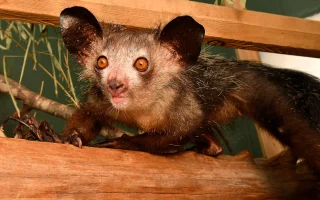lareddepathways.com – The rhinoceros, with its thick skin, large horns, and formidable presence, is one of the most distinctive and fascinating animals in the animal kingdom. These prehistoric-looking creatures are revered for their size, strength, and resilience, yet they face significant threats that put their survival at risk. This article explores the physical characteristics, habitat, behavior, and conservation status of rhinoceroses, shedding light on the challenges they face and the efforts being made to protect them.
Physical Characteristics
Rhinoceroses are large, powerful mammals known for their impressive size and thick, armor-like skin. There are five species of rhinoceros, divided into two main groups: the African rhinos and the Asian rhinos. Each species has distinct physical traits, but all share common features such as a large, barrel-shaped body and a horn or horns made of keratin, the same substance as human hair and nails.
- White Rhino: The largest of the rhino species, the white rhino can weigh up to 5,000 pounds (2,300 kilograms) and measure up to 15 feet (4.5 meters) in length. Despite its name, the white rhino is not actually white; its name comes from the Dutch word “wijde,” meaning wide, referring to its broad mouth. White rhinos are typically found in Southern and Eastern Africa.
- Black Rhino: Slightly smaller than the white rhino, the black rhino is more aggressive and has a hooked upper lip, which helps it grasp leaves and twigs from trees and shrubs. Black rhinos are found in Eastern and Southern Africa and are known for their solitary nature.
- Indian Rhino: Also known as the one-horned rhinoceros, the Indian rhino has a thick, armor-like skin with distinctive folds. It is found in the Indian subcontinent, primarily in India and Nepal, and typically lives in grasslands and wetlands.
- Javan Rhino: The Javan rhino is one of the most endangered rhino species, with fewer than 100 individuals left in the wild. It is similar in appearance to the Indian rhino but smaller and with a less prominent horn. It is primarily found on the island of Java, Indonesia.
- Sumatran Rhino: The smallest of the rhinoceros species, the Sumatran rhino is found in the rainforests of Borneo and Sumatra. It has two horns and is covered in a thick coat of reddish-brown hair. This species is critically endangered, with very few individuals remaining in the wild.
Habitat and Distribution
Rhinoceroses are native to various parts of Africa and Asia, with each species occupying specific habitats. African rhinos primarily live in savannas, grasslands, and open woodlands, where they graze on grasses, shrubs, and small trees. In contrast, Asian rhinos tend to inhabit dense forests, wetlands, and grasslands, often near rivers or water sources.
- White rhinos prefer open grasslands and savannas, where they can graze on the abundant vegetation.
- Black rhinos are more solitary and tend to occupy scrublands and woodlands, where they can browse on shrubs and trees.
- Indian rhinos are found in the floodplains and wetlands of the Indian subcontinent, where they enjoy access to grasslands and freshwater habitats.
- Javan rhinos are found in tropical rainforests, where they are mostly restricted to the Ujung Kulon National Park in Java.
- Sumatran rhinos are confined to the rainforests of Borneo and Sumatra, with small populations living in protected areas.
Although rhinoceroses were once found across much of Asia and Africa, habitat loss, deforestation, and human encroachment have dramatically reduced their range, and many species are now restricted to protected areas and national parks.
Behavior and Social Structure
Rhinoceroses are generally solitary animals, with males and females coming together only for mating. However, the level of social interaction can vary depending on the species.
- White rhinos are the most social of all rhino species and can be seen in groups, particularly when grazing. These groups typically consist of females and their offspring, and sometimes adult males may join the group, though males tend to be more solitary.
- Black rhinos are more solitary and tend to be more aggressive. They are known for their territorial behavior, with males establishing large territories that they defend aggressively against other males. Female black rhinos also maintain home ranges, which may overlap with other females.
- Indian rhinos are solitary but may sometimes be seen in small groups, particularly around waterholes. Males are very territorial, and females with young calves may form loose, non-permanent associations.
- Javan and Sumatran rhinos are also generally solitary, though their behavior can vary based on habitat and availability of food and water. Both species are highly endangered, and their small populations often lead to reduced social interactions.
Despite their solitary nature, rhinoceroses have strong senses of smell and hearing, which they use to detect predators or other threats. They also communicate through vocalizations, body language, and scent marking. They are often seen rubbing their bodies against trees or shrubs, leaving scent marks that help establish territorial boundaries.
Diet and Feeding Habits
Rhinoceroses are herbivores, and their diet consists primarily of grasses, leaves, and shrubs. Depending on the species, rhinoceroses may feed on grasses, twigs, bark, or fruits. Their feeding habits play an important role in maintaining the ecosystems they inhabit, as they help to control the growth of vegetation and promote biodiversity.
- White rhinos are primarily grazers, using their wide mouths to feed on grasses. They are often seen grazing in open grasslands and savannas, where they consume large amounts of vegetation each day.
- Black rhinos are browsers, meaning they feed on leaves, twigs, and shrubs. Their hooked upper lip helps them grasp branches and strip leaves from trees, making them more suited to woodland and scrubland habitats.
- Indian rhinos are also grazers but may feed on a wider variety of vegetation, including grasses, fruits, and aquatic plants. Their preference for grasslands and wetlands provides them with a diverse diet.
- Javan and Sumatran rhinos have diets similar to those of Indian rhinos, feeding on grasses, fruits, and leaves. Due to their forested habitats, they also consume a variety of woody plants and tree bark.
Rhinoceroses are not particularly social feeders, and they often spend long periods grazing or browsing alone. They require large amounts of food each day to sustain their massive size, and they can consume hundreds of pounds of vegetation daily.
Conservation Status and Threats
The rhinoceros is one of the most endangered groups of mammals, with several species facing critical threats to their survival. The International Union for Conservation of Nature (IUCN) classifies the five rhinoceros species as follows:
- White rhino: Near Threatened (with the Southern white rhino population recovering, but the Northern white rhino is functionally extinct)
- Black rhino: Critically Endangered
- Indian rhino: Vulnerable
- Javan rhino: Critically Endangered (with fewer than 75 individuals remaining in the wild)
- Sumatran rhino: Critically Endangered (with fewer than 80 individuals remaining in the wild)
The primary threats to rhinoceroses include:
- Poaching: Rhino horns are highly valued on the black market for use in traditional medicine, art, and as a symbol of wealth. Poaching remains one of the greatest threats to rhino populations, especially in Africa and Asia.
- Habitat loss: As human populations expand, rhino habitats are being destroyed or fragmented by agriculture, infrastructure development, and urbanization. This forces rhinos into smaller, more isolated areas, increasing their vulnerability to poaching and reducing their access to food and water.
- Human-wildlife conflict: As rhinoceroses and humans share overlapping territories, conflicts arise when rhinos damage crops, graze on farmlands, or come into contact with communities living near protected areas.
Conservation efforts for rhinoceroses focus on anti-poaching measures, habitat protection, and the establishment of wildlife reserves and protected areas. Organizations are also working to raise awareness about the importance of rhinos and the need to combat illegal trade in rhino products.
Conclusion
The rhinoceros is a symbol of strength, resilience, and the wild beauty of Africa and Asia. However, these majestic creatures face numerous challenges, and their survival depends on ongoing conservation efforts and international cooperation. By protecting their habitats, combatting poaching, and raising awareness about the threats rhinos face, we can help ensure that these incredible animals continue to roam the Earth for generations to come.
The rhinoceros remains one of the most iconic and endangered species in the world, and their preservation is crucial for maintaining the health and balance of the ecosystems they inhabit.




